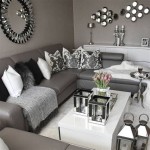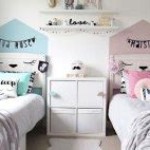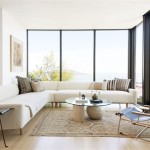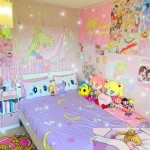Living Room Family Room Decorating Ideas: Creating a Cohesive and Comfortable Space
The living room and family room often serve as the central hub of a home, demanding a balance of aesthetic appeal and practical functionality. Decorating these spaces requires careful consideration of lifestyle, personal preferences, and spatial constraints. Effective decorating strategies can transform these areas into welcoming, comfortable environments that cater to both relaxation and social interaction.
Defining the Room's Purpose and Style
Before embarking on any decorating project, it is crucial to define the primary purpose of the room. Will it primarily serve as a formal living room for entertaining guests, or a casual family room for everyday relaxation and activities? Understanding this distinction will guide the selection of furniture, color palettes, and overall design elements. A formal living room may benefit from more sophisticated and less durable materials, while a family room needs to withstand daily wear and tear.
Defining a style is equally important. Popular styles include traditional, modern, contemporary, minimalist, bohemian, and eclectic. Traditional styles often incorporate ornate details, rich colors, and classic furniture pieces. Modern designs emphasize clean lines, neutral colors, and a focus on functionality. Contemporary styles are constantly evolving, reflecting current trends and incorporating elements from other styles. Minimalist designs prioritize simplicity, removing unnecessary clutter and focusing on essential elements. Bohemian styles celebrate individuality, using vibrant colors, patterns, and textures to create a relaxed and artistic atmosphere. Eclectic styles blend elements from different styles, creating a unique and personalized look.
Once the purpose and style are defined, it becomes easier to make informed decisions about furniture, color palettes, and accessories that align with the overall vision.
Selecting Furniture and Arranging the Layout
Furniture selection is a critical aspect of living room and family room decorating. The sofa typically serves as the focal point of the room, and its size and style should be carefully chosen to complement the room's dimensions and overall aesthetic. Sectional sofas are a popular choice for larger family rooms, providing ample seating for multiple people. Loveseats and armchairs can be used to supplement the sofa, creating a more intimate seating arrangement. Coffee tables, end tables, and console tables provide practical surfaces for drinks, books, and decorative items.
The arrangement of furniture should prioritize both functionality and aesthetics. A common layout involves arranging the sofa and armchairs around a coffee table, creating a conversation area. Consider the placement of the television and fireplace, ensuring that they are easily visible from all seating areas. Avoid blocking pathways and maintain sufficient space for circulation. Proper furniture placement can enhance the flow of the room and create a more inviting atmosphere.
Consider the scale of the furniture in relation to the room's size. Overly large furniture can overwhelm a small room, while undersized furniture can get lost in a larger space. Choosing furniture that is proportionate to the room's dimensions will create a more balanced and harmonious look.
Durability and comfort are also important factors to consider when selecting furniture. Opt for high-quality materials that can withstand daily use and are easy to clean. Consider the comfort of the seat cushions and back support, ensuring that the furniture is comfortable for extended periods of relaxation.
Choosing Color Palettes and Incorporating Textures
Color palettes play a significant role in setting the mood and atmosphere of a living room or family room. Lighter colors can create a sense of spaciousness and airiness, while darker colors can create a more intimate and cozy feel. Neutral colors, such as beige, gray, and white, provide a versatile backdrop for accent colors. Accent colors can be incorporated through throw pillows, blankets, artwork, and accessories. Consider the psychological effects of different colors when selecting the color palette. Blue is often associated with tranquility and calmness, while yellow is associated with energy and optimism. Green evokes feelings of nature and harmony, while red can stimulate excitement and passion.
Texture adds depth and interest to a room. Incorporating different textures can create a more visually appealing and tactile environment. Consider using a variety of materials, such as velvet, linen, wool, and leather. Throw pillows and blankets are an easy way to add texture to a sofa or armchair. Rugs can also add texture and define different areas within the room. Incorporate natural elements, such as wood, stone, and plants, to further enhance the texture and create a more organic feel.
Lighting is another essential element in creating a cohesive color palette and highlighting textures. Natural light should be maximized, and artificial lighting should be carefully chosen to complement the color scheme. Consider using a combination of ambient, task, and accent lighting to create a well-lit and functional space. Ambient lighting provides overall illumination, while task lighting focuses on specific areas, such as reading nooks. Accent lighting highlights artwork and architectural features. Dimmers can be used to adjust the lighting levels and create different moods.
Integrating Storage Solutions and Eliminating Clutter
Effective storage solutions are essential for maintaining a clutter-free living room and family room. Built-in shelves and cabinets can provide ample storage space for books, media equipment, and other belongings. Floating shelves offer a more minimalist storage solution. Consider using baskets and bins to organize smaller items, such as toys, magazines, and remote controls. A storage ottoman can provide extra seating and hidden storage. Console tables with drawers and cabinets can also provide additional storage space.
Regular decluttering is crucial for maintaining a tidy and organized space. Remove any items that are no longer needed or used. Donate or sell unwanted items. Invest in storage solutions that are both functional and aesthetically pleasing. Avoid accumulating unnecessary clutter, such as magazines, newspapers, and decorative items. A clutter-free environment can promote relaxation and reduce stress.
Consider vertical storage options to maximize space, particularly in smaller rooms. Tall bookshelves and cabinets can utilize vertical space and provide ample storage without taking up too much floor space. Wall-mounted shelves can also be used to display decorative items and keep them off the floor.
Adding Personal Touches and Accessories
Personal touches and accessories are what truly make a living room or family room feel like home. Artwork, photographs, and decorative objects can reflect personal interests and create a more personalized space. Choose artwork that complements the color palette and style of the room. Frame photographs of loved ones and display them on shelves or tables. Collectibles and souvenirs can also add personality and tell a story.
Plants and flowers can bring life and vibrancy to a room. Choose plants that are appropriate for the lighting conditions and maintenance requirements. Artificial plants can also be used to add greenery without the need for watering. Fresh flowers can add a touch of elegance and fragrance to the room.
Rugs can define different areas within the room and add texture and warmth. Choose a rug that is the appropriate size for the space and complements the color palette and style of the room. Throw pillows and blankets can add comfort and style to a sofa or armchair. Choose pillows and blankets in a variety of colors, patterns, and textures to create a more visually appealing and inviting space.
Pay attention to the details, such as lighting fixtures, curtains, and window treatments. These elements can significantly impact the overall look and feel of the room. Choose lighting fixtures that are both functional and aesthetically pleasing. Curtains and window treatments can provide privacy, control light levels, and add style to the room.
Optimizing Lighting for Ambiance and Functionality
Lighting is a crucial element often overlooked, yet it significantly impacts the ambiance and functionality of a living room or family room. A well-lit space is both inviting and practical, allowing for various activities from reading to entertaining. Three primary types of lighting – ambient, task, and accent – should be considered when designing a lighting scheme.
Ambient lighting, also known as general lighting, provides overall illumination for the room. This can be achieved using ceiling fixtures, chandeliers, or recessed lighting. The goal is to create a comfortable and even level of brightness throughout the space. Dimmers are highly recommended for ambient lighting, allowing adjustment of the intensity to suit different moods and activities.
Task lighting focuses on illuminating specific areas for particular tasks, such as reading, working, or playing games. Floor lamps or table lamps positioned near seating areas are ideal for providing focused light. Adjustable lamps are particularly useful, allowing users to direct the light where it's needed most. The color temperature of task lighting should also be considered; cooler, brighter light is generally preferred for tasks requiring focus, while warmer light is more suitable for relaxation.
Accent lighting is used to highlight specific features or objects in the room, such as artwork, architectural details, or decorative items. This can be achieved using spotlights, track lighting, or wall sconces. Accent lighting adds depth and visual interest to the space, drawing attention to focal points and creating a more dynamic environment. The intensity and direction of accent lighting should be carefully adjusted to avoid glare and ensure that the highlighted objects are properly illuminated.
Natural light is also a valuable asset to any living room or family room. Maximize natural light by keeping windows clean and unobstructed. Consider using sheer curtains or blinds to filter the light and reduce glare. Mirrors can also be strategically placed to reflect natural light and brighten the space. The combination of natural and artificial lighting can create a versatile and comfortable environment that suits a variety of needs and preferences.

100 Living Room Decorating Ideas Design Photos Of Family Rooms

Modern Farmhouse Summer Living Room Decorating Ideas Clean And Scentsible

23 Stylish Contemporary Family Rooms Designer Room Decorating Ideas

Living And Family Room Decorations S Of Best Rooms

50 Family Room Decorating Ideas Photos Inspiration

The Top 21 Family Room Decorating Ideas Of 2025 Purewow

Family Room Decor Ideas Anne S Home Simply2moms

Florida Family Home Interior Design Ideas Bunch

44 Best Small Living Room Ideas How To Decorate A

26 Family Room Decorating Ideas Easy Design







